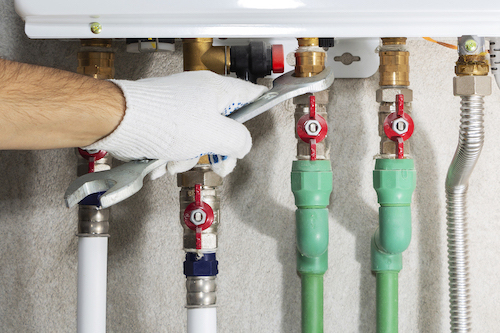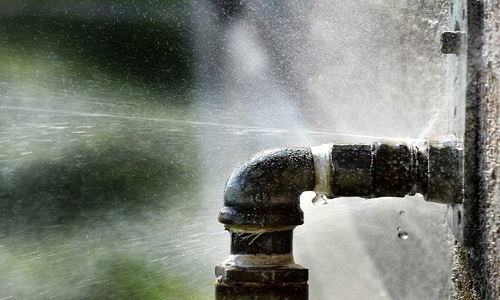Essential Septic Tank Maintenance Guidance Every Homeowner Needs to Know
Essential Septic Tank Maintenance Guidance Every Homeowner Needs to Know
Blog Article
This great article which follows involving What To Do And What Not To Do When Dealing With Water Damage is amazingly interesting. You should read it.

What should you do if a water pipe bursts in your house? The longer you wait, the much more serious the damages that can occur to your building. For these factors, you require to find out how to act in the occasion of a ruptured water pipeline.
Shut Off the Main Waterline Valve
The first thing to do? Shut the shut-off shutoff. Look for the local shut-off shutoff to switch off the water in one certain area only. Go for the primary water line valve and turn it off if you do not recognize where the local shut-off valve is. This step will certainly remove the water promptly in your whole house. Generally, the primary valve is found outside the residence alongside the water meter. If it's not there, you can likewise discover it in two areas: in the cellar at eye level or the 1st flooring on the ground. Normally, contractors put the shut-off shutoff generally ground level washroom or ideal beside it.
Call Water Damages Restoration Pros for Assistance
After closing the water source, call the experts for aid. Since the pipelines needed to be taken care of and also there is a need to attend to the other damages to your building, this situation is not something you can do some DIY. Seek assistance from a reliable business offering 24/7 emergency services if you can not deal. With their expert assistance, you can avoid much larger water damages consisting of warped baseboards, loosened floor tiles, or harmed structures. Do not take this problem lightly and also look for professional assistance for your full peace of mind as well as a legitimate solution.
Document the Damage For Insurance coverage
While you're waiting for the pros to get here, obtain some documents of the damages created by the wayward pipe. Do close-up shots of the damaged valuables and spots.
Recover Points That Can Be Conserved
When you're done taking photos, take a look at the damaged items and also obtain one of the most crucial ones from the pile. Dry them off in a dry/warm area far from the damaged area and attempt to maintain them as long as you can. Drag as much moisture as you can to the material so it can start to dry.
Begin the Drying Process
You require to begin the drying process asap. The good news is, the water from your waterlines is currently clean so you do not need to fret about sewer water. The streaming water may have interrupted the dust and particles in your rugs and floorboards. In this case, placed some gloves on and begin some damage control. Use containers to dispose out the water. Remove as much water as you can from the surface areas with old towels. Turn on an electrical fan or open your home windows to advertise air circulation. These actions will accelerate to dry and also prevent mold and mildew as well as mold growth.
Specialists are the only people qualified to examine correctly as well as deal with the burs pipes and also subsequent damages. They generally provide quiet red flags like bubbling paint, water spots.
What should you do if a water pipeline bursts in your residence? For these reasons, you need to find out how to act in the event of a ruptured water pipe. After closing the water resource, call the professionals for assistance. With their specialist help, you can stop much larger water damages consisting of warped baseboards, loose ceramic tiles, or harmed frameworks. The good news is, the water from your waterlines is currently tidy so you do not have to worry about sewer water.
How to Handle a Burst Pipe and Minimize Damage
Steps to Take Ahead of Time
If you own property in an area that experiences cold weather, you need to be aware of seasonal maintenance tasks that will help you protect your property as the weather changes each year. One of the most important steps is to winterize your pipes to ensure they won't freeze or burst when the temperature drops. This includes action items like insulating any exposed pipes, detaching garden hoses and covering outdoor faucets. If the weather gets cold enough, you may even consider leaving a faucet dripping or opening cabinet doors during the coldest parts of the day.
No matter how prepared you might be, accidents and emergencies still happen. You'd be wise to set up a savings account specifically for your property so you have a "rainy day" fund set aside for unexpected expenses. All homes—regardless of age, location or condition—will inevitably need some form of emergency repair.
Steps to Take for Frozen Pipes
A frozen pipe will not necessarily burst, so if you can catch a frozen pipe early on, you could save yourself a major headache. When your area experiences frigid temperatures, be sure to check your plumbing and keep an eye out for warning signs like faucets only releasing small amounts of water or toilets not refilling when flushed. If you do run into one of these issues, you're likely dealing with a frozen pipe.
If this happens, your first step should be to cut off the water supply to that section of the plumbing. Expanding and freezing water can quickly cause damage. Even if the water supply is shut off, you will likely still deal with some leaking from the water that defrosts after the pipe has thawed. Be prepared with a mop, bucket and/or towels to quickly soak up any excess water.
In order to thaw a frozen pipe, you can use a space heater, infrared or incandescent heat lamp, or even a hairdryer to warm up the frozen area. Heat tape is also an option and should be used according to manufacturer instructions. Do not use any sort of open flame to thaw frozen pipes, as it poses a major fire hazard and can damage your pipes further.
Steps to Take for a Burst Pipe
Water damage claims are the second most common insurance claim in the U.S. When you're dealing with a frozen pipe, the water continues to expand as it freezes, which creates pressure that can cause a pipe to burst. When this happens, the crack or leak in the pipe allows water flow from the pipe to enter your home where it shouldn't. If a pipe does burst, you need to act quickly to mitigate property damage and repair cost.
Your very first step should be to shut off your main water supply to minimize flooding—typically the most expensive damage to address. Once you've shut off the water supply, make sure you identify the entire area that has been impacted by the leak. Remove as much water as possible—as quickly as possible—using a mop, sponges, towels or a shop vacuum or wet/dry vacuum. To prevent long-term damage due to moisture build-up, run a dehumidifier or fan in the affected area. Contact a licensed plumber to ensure the pipe is correctly repaired before running any water to that section of the home again. Burst pipes and the associated water damage are something you absolutely want to avoid as a property owner. If you've had to learn your lesson the hard way, don't let yourself get caught in a similar situation during the next spell of cold weather. The best way to deal with frozen or burst pipes is to prevent them in the first place—proactive winter maintenance will save you time, money and a whole lot of stress.

As a fervent person who reads on Rules For Handling Water Damage, I imagined sharing that excerpt was important. Sharing is caring. Helping people is fun. I take joy in reading our article about Rules For Handling Water Damage.
Report this page